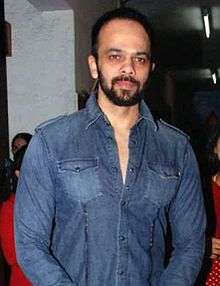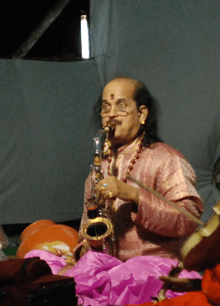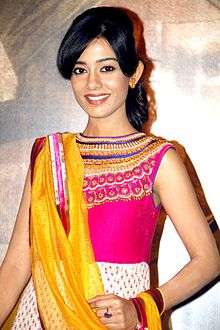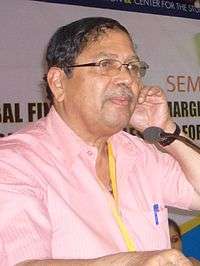Mangaloreans
| |||||||
| Regions with significant populations | |||||||
|---|---|---|---|---|---|---|---|
| Dakshina Kannada | 2,083,625 (2011)[1] | ||||||
| Udupi district | 1,177,908 (2011)[2] | ||||||
| Languages | |||||||
| Tulu, Konkani, Kannada, Beary, Urdu | |||||||
| Religion | |||||||
| Hinduism, Christianity, Islam, Jainism, Buddhism | |||||||
Mangaloreans (Tulu: Kudladaklu; Kannada: Mangalurinavaru; Konkani: Kodialkar; Beary: Maikaltanga; Urdu "Kaudalvale") are generally considered to be a collection of ethnic groups that hail from the areas comprising Tulu Nadu (historical South Canara district) on the south western coast of India. It can also refer to residents of Mangalore.[3]
History
Historically, Tulu Nadu included the two separate lands of Haiva and Tuluva. The Ballal Kings of Sullia had ruled this area around 1100 years back. The Bunt, Brahmin migration to Tulu Nadu might have happened during the lifetime of the Kadamba king Mayuravarma at 345 AD. During the 13th century, the Hindu philosopher Madhvacharya built the eight Mathas (monasteries) in modern Udupi district.
During the rule of the Vijayanagara dynasty, Tulu Nadu was administered in two parts—Mangaluru Rajya and Barakuru Rajya. Tulu Nadu was the original homeland of the Tuluva Dynasty, the third dynasty of the Vijayanagara monarchy. Tulu Nadu was governed by feudatories of the Vijayanagara Empire until the 17th century. The longest reigning dynasty of Tulu Nadu was the Alupas. They were the feudatories of the prominent dynasties of Karnataka. The Kadamba dynasty of Banavasi was the earliest, under which the Alupas flourished. Later the Rashtrakutas of Manyakheta, Chalukyas of Badami, Chalukyas of Kalyani, Hoysalas of Durasamudra and rayas (kings) of Vijayanagara were the overlords. The Alupas, however, were independent and their subordination was nominal at best. They ruled during the Vijaynagara domination of Tulu Nadu from 14th to the 17th centuries. The region became extremely prosperous during Vijayanagara period with Barkur and Mangalore gaining importance. After the decline of the Vijayanagara Empire, much of Tulu Nadu came under the control of the Keladi Nayakas of Ikkeri.

Over the following many centuries, more ethnic groups migrated to the area. Various Konkani peoples arrived by sea, as Mangalore was a major port that served not only the Portuguese but also the Arabs for maritime trades. Jains were already a prominent group and even today are uniquely preserved in Tulu Nadu. Though small in number, the Jains left behind indelible reminders of their glory with temples (bastis) in Moodabidri, and monolithic statues of Bahubali and the Gomateshwara in Karkala, Venoor and Dharmasthala. In the 16th century, there was a large influx of Goan Catholics to this region from Goa. They built prominent educational institutions and contributed to the development of education in the region. The Muslim community of Tulu Nadu are basically descended from Arab traders who married local women and settled there. They speak Beary bashe, which is a mix of Tulu and Kannada.
Demographics
Majority of Mangaloreans belong to the Tuluva ethnic group. The Tuluvas have historically been concentrated in the coastal areas. The next largest group are the Konkanis, in particular the Goud Saraswat Brahmins, Daivadnya Brahmins as well as the Mangalorean Catholics whose ancestors migrated here from Goa, due to persecution by the Portuguese. Other groups who historically settled in Tulu Nadu, include the Kannadigas and Bearys.
Culture
Cuisine
Mangalorean cuisine is largely influenced by the South Indian cuisine, with several cuisines being unique to the diverse communities of the city. Coconut and curry leaves are common ingredients to most Mangalorean Curry, as are ginger, garlic and chili. Mangalorean Fish Curry is popular dish in Canara. The Tulu community's well-known dishes include Kori Rotti (dry rice flakes dipped in gravy), Bangude Pulimunchi (silver-grey mackerels), Beeja-Manoli Upkari, Neer dosa (lacy rice-crêpes), Boothai Gasi, Kadabu, and Patrode. The Konkani community's specialities include Daali thoy, beebe-upkari (cashew based), val val, avnas ambe sasam, Kadgi chakko, paagila podi, and chana gashi. Vegetarian cuisine in Mangalore, also known as Udupi cuisine, is known and liked throughout the state and region. Since Mangalore is a coastal town, fish forms the staple diet of most people.[4] Mangalorean Catholics' Sanna-Dukra Maas (Sanna –idli fluffed with toddy or yeast; Dukra Maas –Pork), Pork Bafat, Sorpotel and the Mutton Biryani are well-known dishes. Pickles such as happala, sandige and puli munchi are unique to Mangalore. Shendi (toddy), a country liquor prepared from coconut flower sap, is popular.[5]
Traditions
Many classical dance forms and folk art are practised among Mangaloreans. The Yakshagana, a night-long dance and drama performance, is held in Mangalore,[6] while Hulivesha (literally, tiger dance), a folk dance unique to the city, is performed during Dasara and Krishna Janmashtami.[7] Karadi Vesha (bear dance) is another well known dance performed during Dasara.[5] Paddanas (Ballad-like epics passed on through generations by word of mouth) are sung by a community of impersonators in Tulu and are usually accompanied by the rhythmic drum beats.[5] The Bearys' unique traditions are reflected in such folk songs as kolkai (sung during kolata, a valour folk-dance during which sticks used as props), unjal pat (traditional lullaby), moilanji pat, and oppune pat (sung at weddings).[8] The Evkaristik Purshanv (Konkani: Eucharistic procession) is an annual Catholic religious procession led on the first Sunday of each New Year.[5]
World record
On 26–27 January 2008, a Konkani cultural event, Konkani Nirantari, held in Mangalore by a Mangalorean organization, Mandd Sobhann, entered the Guinness Book of World Records for non-stop singing of Konkani hymns. Mandd Sobhann members sang for 40 hours, surpassing the old record of 36 hours held by a Brazilian musical troupe.[9]
Notable Mangaloreans
- Abbakka Rani – Chowta queen of Tulu Nadu who opposed the Portuguese in the latter half of the 16th century
- Abdussalam Puthige – Managing Director and Editor in Chief, Varthabharathi Kannada daily
- Ahmed Noori – Mangalore
- Aishwarya Rai – Bollywood actress and former Miss World
- Amrita Rao – Bollywood actress
- Anant Pai – Educationist and creator of Indian comics
- Anil Kumble – Former cricketer
- Anushka Shetty – Kollywood and Tollywood actress
- Aravind Adiga – Writer and journalist who won the Booker Prize in 2008
- Ashish Kumar Ballal – Former captain of the Indian National Hockey team
- Ashwini Akkunji – Sprint athlete, Asian Games and Commonwealth Games gold medalist
- B. R. Shetty – Entrepreneur
- B. V. Karanth – Playwright and director
- Bannanje Govindacharya – Madhava scholar
- Bolwar Mahammad Kunhi – Kannada writer
- Budhi Kunderan – Cricketer
- Daya Nayak – Sub-inspector in the Mumbai Police
- Deepika Padukone – Bollywood actress
- Devi Prasad Shetty – Cardiac surgeon and philanthropist
- Freida Pinto – Indian actress and model
- Ganesh Hegde – Singer, performer, video director and Bollywood choreographer
- Genelia D'Souza – Bollywood actress
- George Fernandes – Former Railway and Defence Minister
- Gopalakrishna Adiga – Kannada poet
- Guru Dutt – Film director, producer and actor.
- Gurukiran – Singer, music director in the Kannada film industry
- Isha Koppikar – Bollywood actress
- Janardhana Poojary – Former Union Minister of State for Finance
- KL Rahul – Test and ODI cricketer
- K. S. Hegde – Former Speaker of Lok Sabha and Supreme Court Judge
- K. Shivaram Karanth – Kannada writer, social activist, environmentalist, Yakshagana artist, film maker and thinker
- K. V. Kamath – Chairman of Infosys Limited
- Kadri Gopalnath - One of the pioneers of Carnatic music on the saxophone
- M. Govinda Pai – Kannada poet
- M. V. Kamath – Journalist and former Chairman of Prasar Bharthi
- Madhwacharya – Hindu saint and philosopher
- Margaret Alva - Former Union Minister and Parliamentarian
- Nitte Santosh Hegde – Former justice of the Supreme Court Of India, former Solicitor General of India, and Lokayukta (ombudsman) for Karnataka State of India from 2006–2011 and activist
- Oscar Fernandes - Congress Chief Secretary and Parliamentarian
- Pooja Hegde – Miss Universe India 2010 second runner up and Kollywood actress
- Prakash Padukone – Former badminton player, most notable for winning the All England Badminton in 1980
- Prakash Raj – Actor, director and producer who won the National Award winner in 2008
- Rakshith Shetty – Kannada film director and actor
- Ratnakaravarni – Kannada poet and writer
- Ravi Shastri – Former captain of the India national cricket team
- Reshma Shetty – American actress
- Rohit Shetty – Bollywood director
- Rommel Rodrigues – Journalist, books author, film director, screenwriter and producer.
- Sandeep Chowta – Bollywood and Tollywood music director, head of Columbia Records in India
- Sheetal Mallar – Model who won the Femina Look of the Year in 1994
- Shilpa Shetty – Bollywood actress
- Shirish Kunder – Bollywood director
- Siddhanth Thingalaya – Track and field athlete
- Sneha Ullal - Bollywood actress
- Sunil Shetty – Bollywood actor, producer, and entrepreneur
- Suman Talwar - Actor Hindi, Telugu, Tamil, Malayalam and Kannada films.
- T. M. A. Pai – Doctor, educationist, banker and philanthropist who founded the university town of Manipal in Udupi
- Thumbay Moideen - Entrepreneur & Founder of Thumbay Group, UAE
- U. R. Rao – Space scientist and former chairman of the Indian Space Research Organisation (ISRO)
- Upendra – Kannada film actor, director, screen writer, lyricist and singer
- V. J. P. Saldanha – Konkani littérateur, dramatist, novelist, short-story writer and poet
- V. Manohar – Music director, lyricist, film director and actor in Kannada Cinema
- V. S. Acharya – Higher education minister in the Karnataka state government
- V. T. Rajshekar – Journalist, founder and editor of the Dalit Voice
- Veerappa Moily – Minister of Corporate Affairs and former chief minister of Karnataka
- Veerendra Heggade – Philanthropist and the Dharmadhikari (hereditary administrator) of the Dharmasthala Temple
- Victor Rodrigues – Konkani novelist and short story writer
- Vittal Mallya – Entrepreneur
- Vijay Mallya – Liquor and airline baron
- Yograj Bhat – Kannada cinema film director, producer, screenwriter and a lyricist
Gallery
-

Oscar Fernandes (right)
See also
References
| Look up Mangalorean in Wiktionary, the free dictionary. |
- ↑ http://www.census2011.co.in/census/district/252-dakshina-kannada.html
- ↑ http://www.census2011.co.in/census/district/268-udupi.html
- ↑ Venkatesh Srinivas Kulkarni Journal of South Asian Literature Vol. 25, No. 1, THE CITY IN SOUTH AND SOUTHEAST ASIAN LITERATURE (Winter, Spring 1990), pp. 55-66 Published by: Asian Studies Center, Michigan State University, "The Mangaloreans with their roads and their rural electrification felt superior to everyone else. ... Mangaloreans and the people of their district, South Kanara, were Mangaloreans first and Kannadigas third."
- ↑ "Typically home". Chennai, India: The Hindu. 2007-08-11. Archived from the original on February 5, 2012. Retrieved 2008-07-09.
- 1 2 3 4 D'Souza, Stephen. "What's in a Name?". Daijiworld Media Pvt Ltd Mangalore. Archived from the original on February 5, 2012. Retrieved 2008-03-04.
- ↑ Prabhu, Ganesh (2004-01-10). "Enduring art". Chennai, India: The Hindu. Archived from the original on February 5, 2012. Retrieved 2008-07-20.
- ↑ Pinto, Stanley G (2001-10-26). "Human `tigers' face threat to health". The Times of India. Archived from the original on February 5, 2012. Retrieved 2007-12-07.
- ↑ "Beary Sahitya Academy set up". Chennai, India: The Hindu. 2007-10-13. Archived from the original on February 5, 2012. Retrieved 2008-01-15.
- ↑ "Mangalore: Guinness Adjudicator Hopeful of Certifying Konkani Nirantari". Daijiworld Media Pvt Ltd Mangalore. 2008-01-25. Retrieved 2008-02-01.
.jpg)
.jpg)






.jpg)



.jpg)

.jpg)












.jpg)

.jpg)
